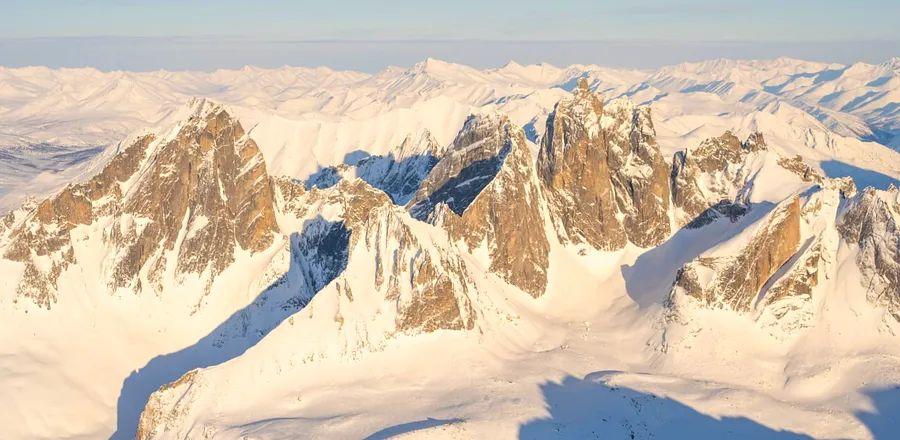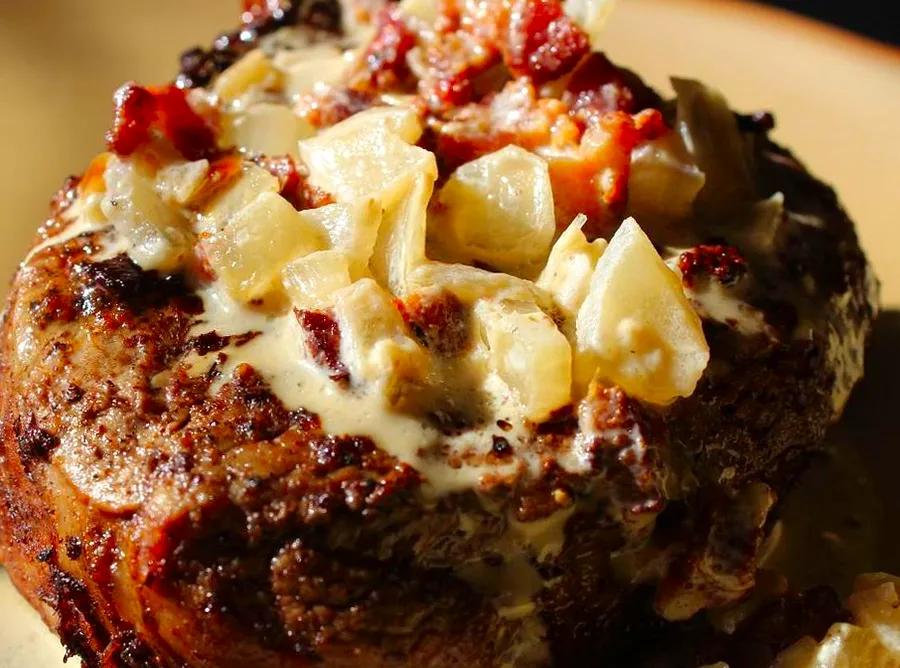The Coldest Spot in North America and What Makes It Special

Stretching over 62 miles, Tagish Lake flows from the Yukon into British Columbia. In summer, the shores are lined with lush green spruce and rugged gray peaks. But come winter, the scenery transforms into a vast expanse of white, cloaked in soft snow. As I stand by the water's edge, the only hint of civilization is the warm glow from Southern Lakes Resort & Restaurant and its charming log cabins.
And then there's hockey. While I watch a game on the lake's improvised rink, a player stops to point. I look up to see the vibrant green waves of the northern lights illuminating the sky. The Yukon lies directly beneath the auroral oval, the region around the Earth's geomagnetic North Pole where this spectacular display is most vivid, peaking from late August to mid-April. Though the game resumes, my gaze is fixed skyward, mesmerized by the lights swirling among the stars—a living postcard from the universe.

Photos by Kari Medig
Covering 186,272 square miles, the Yukon is nearly the size of Spain, yet it has only one city, three towns, four villages, and a few unincorporated communities, totaling around 45,000 residents. The territory boasts Canada’s tallest mountain, its second-longest river, and the largest nonpolar ice field on the planet. However, it’s primarily recognized for the gold discovery near the Klondike River and the ensuing gold rush from 1896 to 1899, which attracted thousands and gained international fame. Yet, the Yukon’s history spans millennia, deeply rooted in the lives of Indigenous peoples.
As a Canadian who has explored every province and territory, I had previously visited the Yukon and cherished the experience, but I craved more—more of its winter. Winter here is legendary; newcomers were once dubbed cheechakos until they survived a season, a term meaning “new arrivals.” The Yukon’s winter is long, dark, cold, and serene, yet I had heard whispers of its enchantment. So, in February, I journeyed from my home in Alberta for a week-long adventure with Entrée Destinations, eager for the magic.

Photo by Kari Medig
The following morning proves even colder than the previous night, and the biting air stings my cheeks as I make my way to Tagish Lake to join Michelle Phillips of Tagish Lake Kennel for a dogsled ride. Born and raised in the Yukon, Phillips welcomes me in a fur-trimmed parka, her warm smile reflecting the spirit of an outdoor enthusiast. A highly skilled musher, she has competed in the Iditarod several times. In 2024, she claimed victory in the 450-mile Yukon Quest from Whitehorse to Dawson City for the second consecutive year.
In the Yukon, dogs once played an essential role in transportation. They skillfully navigated frozen rivers and dense forests, delivering supplies and communication to isolated communities. By 1898, during the gold rush, around 4,000 dogs were working in the area. While snowmobiles have taken over this role today, some, like Phillips, still use sled dogs to traverse the landscape and showcase the spirit of the Yukon to visitors.
The dogs eagerly bark and pull at their harnesses, ready to begin our journey. I settle into the sled's basket, wrapping myself in blankets. Phillips stands behind, gripping the sled handle and pressing the brake with one foot; she releases it, and we surge forward. As we gain speed, I can't help but notice the joyful expressions on some of the dogs' faces.
As we glide through the snow, Phillips introduces each dog: Dougal, Astro, Adira, Lambo, Selene, and Waylon. She shares their roles on the team and the commands: 'gee' for right, 'haw' for left, and 'whoa' to stop. We venture deeper into the snow-laden forest, the dogs' paws rhythmically thumping on the trail. I reflect on the significance of this transportation method, rooted in Indigenous innovation and revered through generations. When we pause for a break, the dogs are prioritized for care. 'I adore the vastness of the Yukon,' Phillips shares, living on 40 acres near Tagish Lake with 65 dogs. 'The light, the tranquility, the stillness.'
After a few hours, Phillips returns me to the resort, and I find myself crossing Tagish Lake once more, this time on a snowmobile, heading in the opposite direction, eager to catch the sunset from an elevated spot. The sun begins to dip below the horizon, casting a warm orange and yellow glow on the snow, prompting me to ponder Phillips's words about the vastness.
We might lack five-star dining, but I believe we offer five-star experiences.
You truly know you’re in the northernmost regions when you spot signs for the Arctic Ocean. The 458-mile unpaved Dempster Highway stands as the only public road in Canada that traverses the Arctic Circle and remains open year-round. Two days after my journey with Phillips, my Entrée Destinations group of four meets Jesse Cooke, founder of the tour operator Klondike Experience, to navigate the highway towards Tombstone Territorial Park. As Cooke outlines the day’s plans, the snow sparkles off the mountains that loom like guardians along the route.

Photos by Kari Medig
Originally from Ontario, Cooke has made the Yukon his home since 2005. 'We might not have five-star dining, but I believe we offer five-star experiences, where you come here to live something genuine and authentic,' he shares.
Established in 2000 as part of the Tr’ondëk Hwëch’in land claim agreement, the 849-square-mile Tombstone Territorial Park lies fully within the traditional territory of the Indigenous peoples. In the summer, its trails and serene lakes attract hikers and campers, while in winter, the park becomes a haven for snowshoeing, dogsledding, snowmobiling, and cross-country skiing. Throughout the year, it provides a habitat for caribou, moose, Dall sheep, wolves, and both grizzly and black bears.
The Tr’ondëk Hwëch’in First Nation refers to this region as Ddhäl Ch'èl Cha Nän, which translates to "ragged mountain land.” As I strap on snowshoes and follow Cooke through the woods, the name makes sense. I tread past fragrant spruce trees, leaving racquet-like impressions in the snow, and feel a sense of my own smallness. I am just a tiny dot in an expansive landscape, a fleeting visitor in a timeless place where Indigenous peoples have resided for countless generations. Besides our group's laughter and conversation along the trail, the only other sounds are the rustling of gray jays flitting through the trees. Curious about how deep the snow might be just off the path, I remove my snowshoes and immediately sink to my waist.
After concluding our snowshoeing adventure, I get ready to view the landscapes from a new perspective. I climb into a helicopter, secure my seatbelt, and don headphones to hear the pilot. Tombstone Mountain, the namesake of the park, glimmers in the afternoon sun. From above, the "ragged mountain land" appears even more majestic, and I feel my pulse race as the helicopter descends. The frozen river's line, dense forests, expansive valleys, and towering peaks stretch out in all directions. Witnessing the park's vastness deepens my appreciation for the Tr’ondëk Hwëch’in people who have flourished here.
The helicopter lands outside Dawson City, once dubbed the “Paris of the North” for its grand buildings and opera houses. Many structures from the gold rush era still stand, forming part of a national historic site, with tours led by Parks Canada staff who recount the history of the gold rush. In recent years, they have included more insights about the Tr’ondëk Hwëch’in. A few members of our tour group stop by the Westminster Hotel, operating since the 1930s, to check out “The Pit,” a beloved community bar featuring a canoe hanging from the ceiling. Together with locals, we raise a toast to a wonderful day.

Photo by Kari Medig
It feels appropriate to conclude my journey in the territory with Jackie Olson, a Tr’ondëk Hwëch’in artist and the granddaughter of Joe and Annie Henry, two renowned pioneers who lived close to the Dempster Highway. (Locals affectionately refer to the road as the “Joe Henry Highway,” as he guided the surveyors who mapped its course in 1958.)
As sunlight pours into her living room in Dawson City, Olson relaxes with a cat curled in her lap and two dogs at her feet. After exploring the world as a young artist, she returned to Dawson City to create her abstract expressionist works, often incorporating bark and feathers. Olson has played a key role in fostering the community, advocating for the designation of Tr’ondëk-Klondike, which spans the Yukon and Klondike rivers. In September 2023, it was recognized as Yukon’s––and Canada’s––latest UNESCO World Heritage site. This site encompasses eight parcels of land in the Dawson City region, exploring the impact of rapid colonization during the gold rush on Indigenous peoples––a different narrative about the Yukon.

Photos by Kari Medig
Olson’s artwork is included in private and permanent collections around the globe, from the Indigenous Art Centre in Québec to Amerikahaus Munich. She is among ten Indigenous Yukon artists––including Carcross/Tagish First Nation artist Violet Gatensby––whose works are now part of the Global Affairs Canada Visual Art Collection, displayed in Canadian embassies and buildings across over 100 cities. In 2022, she received the Yukon Hall of Innovators Lifetime Achievement Award for her “transformative reimagining of traditional Yukon practices into a fresh approach to art.”
Currently, Olson conducts art classes centered around the willow trees she discovers while foraging. 'The more you engage with willow and prune it, the stronger it becomes,' she explains. 'It feels like a meaningful way to promote stewardship of the land.' She shares her aspiration to complete the cabin she is constructing at the entrance of Tombstone Territorial Park, where she hopes to welcome visitors to educate them about the Yukon, its willows, and its myriad wonders. 'I have this profound sense that the land is calling me home,' she reflects.
Why We Adore the Yukon
Michelle Phillips is a lifelong Yukoner and a long-distance musher. She operates Tagish Lake Kennel and provides dogsled tours.
'I began dogsledding in my late 20s after meeting my partner. During a training run with him, I was amazed by the dogs’ incredible athleticism. When I turned 31, I decided to tackle the 1,000-mile Yukon Quest. Since then, I’ve participated in 21 of those grueling races. I’ve been pulled down mountains, dragged face-first up them, endured storms with winds reaching 80 miles per hour, and waded through water up to my waist. No race is ever dull, that’s for sure. The sport of dogsledding is really expanding, and it’s wonderful how it fosters equality between men and women.'
'I plan to take on the Iditarod next year, but it might be my final adventure. It’s hard to tell. I won’t stop sledding; I’ll continue giving tours. I launched my business 21 years ago, but my hope remains unchanged: I want my guests to feel the bond between humans and animals, and to appreciate the love, care, and respect we have for our dogs. They truly relish their work.'
Jesse Cooke is the founder of Klondike Experience, offering guided day tours and multi-day adventures.
'I’ve spent nearly 20 years in the Yukon. What keeps me here is the culture, the people, the lifestyle, and the pace of life. It’s unlike anywhere else I’ve ever visited.'
'When I launched the business in 2012, it was just my wife and me. Now we have a team of 13. We welcome guests from all corners of the globe. What I cherish about hosting might sound cheesy, but it’s genuine: witnessing the awe, wonder, and beauty of the Yukon through a traveler’s eyes for the very first time, time and again. I can feel that excitement, and I absolutely love it.'
'Most visitors to the Yukon are already seeking something unique. But I always remind them to embrace the place as it truly is. Not as they expect or wish it to be. Immerse yourself in the communities and the culture.'
Violet Gatensby is an artist from the Carcross/Tagish First Nation who apprenticed under Tlingit master carver Wayne Price. She created the commemorative medals for the 125th anniversary of Yukon becoming a Canadian territory in 2023.
'When I first began contemplating a career as an artist, I was on the path to working in a mine. I had dropped out of high school and needed to earn some money. While at home, I found myself painting. One day, a visitor came by to see my dad, spotted my artwork, and bought a painting right on the spot. That moment changed everything. I realized I could actually make a living doing what I loved.'
'The very next day, I went to the Individual Learning Centre in Whitehorse and told them, “I want to attend art school, but I need my tenth-grade diploma. Can you help me?” The person there replied, “I’ll assist you if you promise to return and finish your full high school degree.” So, I completed my sophomore year, got accepted into college, graduated high school, and went on to art school.'
'That single moment made an incredible difference in my life. I’m thankful I had the courage to follow that instinct because now that I’m here, I wouldn’t want to pursue anything else.'

Photos by Kari Medig
Embark on this journey
Writer Debbie Olsen explored with Entrée Destinations, whose 'Winter in the Yukon' itinerary runs from February to April. This tour is part of the 20 'Stories of Canada' experiences created in collaboration with Indigenous community leaders, the Canadian government, and regional tourism boards. These trips aim to immerse visitors in new experiences, locations, and communities. 'Many travelers come to the Yukon in winter for the northern lights, but there’s a wealth of other activities and sights to enjoy here,' says Marc Telio, owner of Entrée Destinations. 'The Yukon is truly exhilarating.' Starting at $7,350 per person for 7 nights.
Evaluation :
5/5



